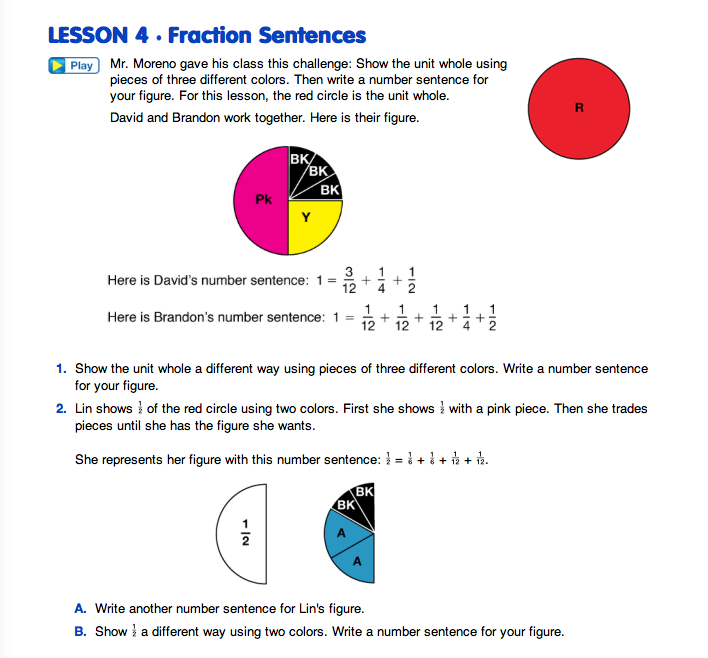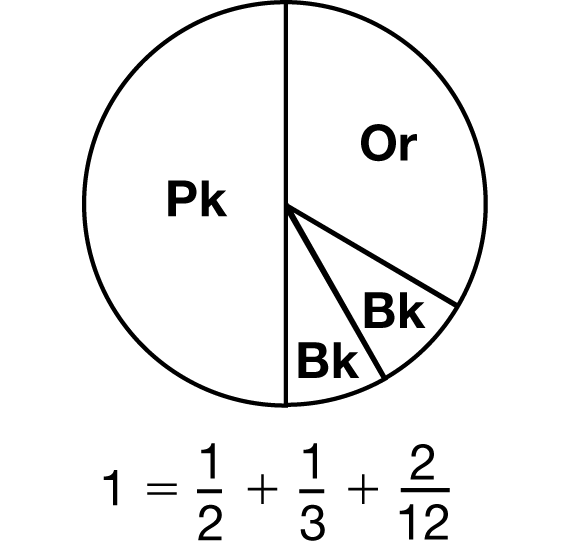Fraction Sentences
Est. Class Sessions: 3Developing the Lesson
Part 1. Fraction Sentences
The Fraction Sentences pages in the Student Guide begin with examples of number sentences for one whole modeled with fraction pieces. Question 1 asks students to show one whole a different way using three colors and to write number sentences for their figures. Figures 2 and 3 show two possible solutions and corresponding number sentences.
Students work in pairs to build figures and write number sentences. As students work, check their number sentences to see if they correspond to their figures. For example, be sure that the sums really do equal one whole. Also, students should not use denominators that are not represented in their figures. For example, although 2/12 = 1/6, the two black triangles in Figure 2 should be represented in the number sentence by 2/12 or 1/12 + 1/12 and not by 1/6.
In Questions 2–8, students build models of fractions according to specific criteria and write number sentences for their figures. Students' models for a given fraction will differ from one another. When pairs of students have finished Question 8, ask them to join with another pair of students to share their solutions and check number sentences.
Discuss Question 7 with the class.
Ask:
Write the fractions on the board or display as students say them: Possible ways to write one whole using one color are: 2/2, 3/3, 4/4, 5/5, 6/6, 8/8 and 10/10.
Then ask:
Students should recognize that fractions with the same numerator and denominator are equal to one whole.
















